Moderate overlap front: original test
Rating applies to 2008-13 models
Tested vehicle: 2008 Infiniti EX35 Journey 4-door 4wd
The Infiniti EX35 was introduced in the 2008 model year and renamed the EX37 in the 2013 model year because the engine size was increased. The EX was renamed the QX50 beginning with the 2014 model year.
| Evaluation criteria | Rating |
|---|---|
| Overall evaluation | |
| Structure and safety cage | |
| Driver injury measures | |
| Head/neck | |
| Chest | |
| Leg/foot, left | |
| Leg/foot, right | |
| Driver restraints and dummy kinematics | |

Action shot taken during the frontal offset crash test.

The dummy's position in relation to the steering wheel and instrument panel after the crash test indicates that the driver's survival space was maintained well.
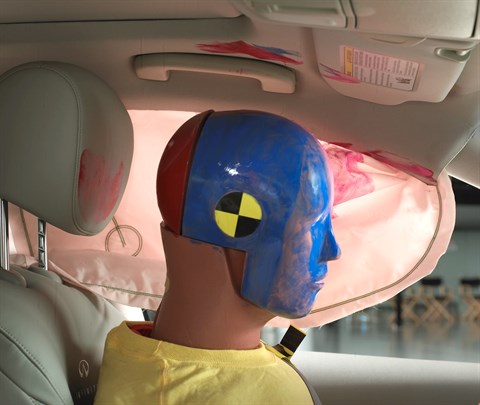
Smeared greasepaint indicates where the dummy's head brushed the side airbag during rebound. The head also hit the roof, sunvisor, and grab handle before moving back against the head restraint.
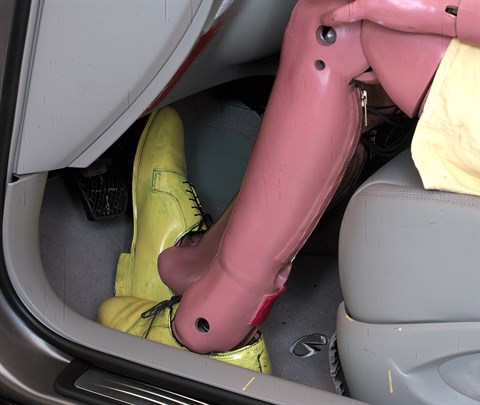
Intrusion into the driver's space was minimal, and all leg and foot injury measures were low.
Side: original test
Rating applies to 2008-13 models
Tested vehicle: 2008 Infiinti EX35 Journey 4-door 4wd with standard front and rear head curtain airbags and standard front seat-mounted torso airbags
The Infiniti EX35 was introduced in the 2008 model year and renamed the EX37in the 2013 model year because the engine size was increased.
Two tests of 2008 EX35 models were conducted. The injury ratings for the driver are based on just the second test; measures for the driver in the first test were not obtained because of equipment failure. The injury ratings for the rear passenger and the head protection ratings for both the driver and passenger are based on both tests. Structural ratings also are based on both tests.
| Evaluation criteria | Rating |
|---|---|
| Overall evaluation | |
| Structure and safety cage | |
| Driver injury measures | |
| Head/neck | |
| Torso | |
| Pelvis/leg | |
| Driver head protection | |
| Rear passenger injury measures | |
| Head/neck | |
| Torso | |
| Pelvis/leg | |
| Rear passenger head protection | |
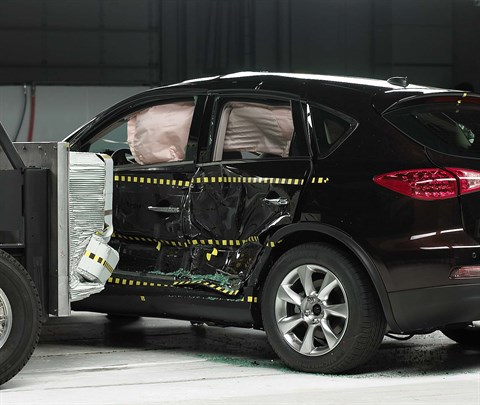
View of the vehicle and barrier just after the second of two crash tests.
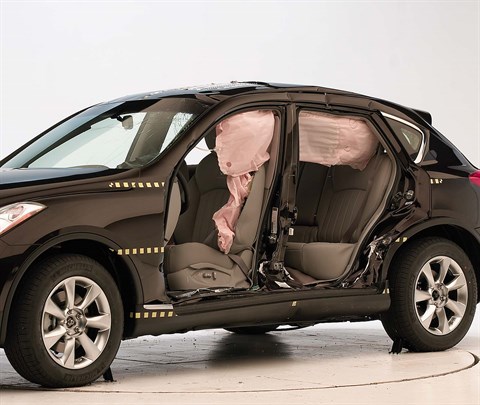
View of the vehicle after the second crash with doors removed, showing the side airbags and damage to the occupant compartment.
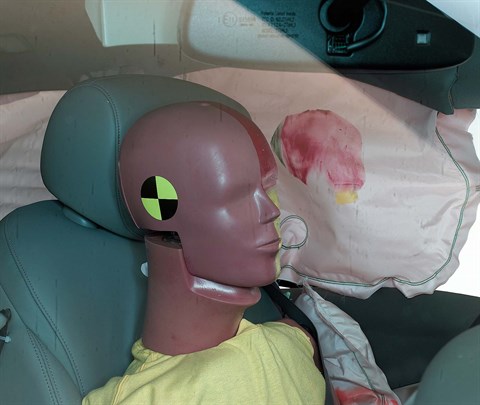
Smeared greasepaint shows where the driver dummy's head was protected from being hit by hard structures by the side curtain airbag in the second test.
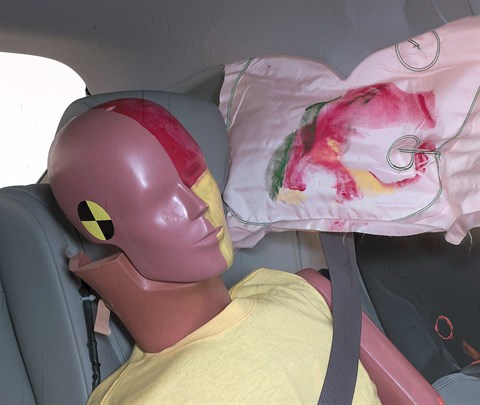
Smeared greasepaint shows where the rear passenger dummy’s head was protected by the side airbag in the second test.
Roof strength
Rating applies to 2008-13 models
Tested vehicle: 2011 Infiniti EX35 Journey 4-door 4wd
| Overall evaluation | |
|---|---|
| Curb weight | 3,970 lbs |
| Peak force | 15,878 lbs |
| Strength-to-weight ratio | 4.00 |
Head restraints & seats
Seat type: Power leather seats with manual adjustable lumbar AHR
| Overall evaluation | |
|---|---|
| Dynamic rating | |
| Seat/head restraint geometry |
About the head restraint & seat test
Currently, IIHS tests apply only to front seats.
